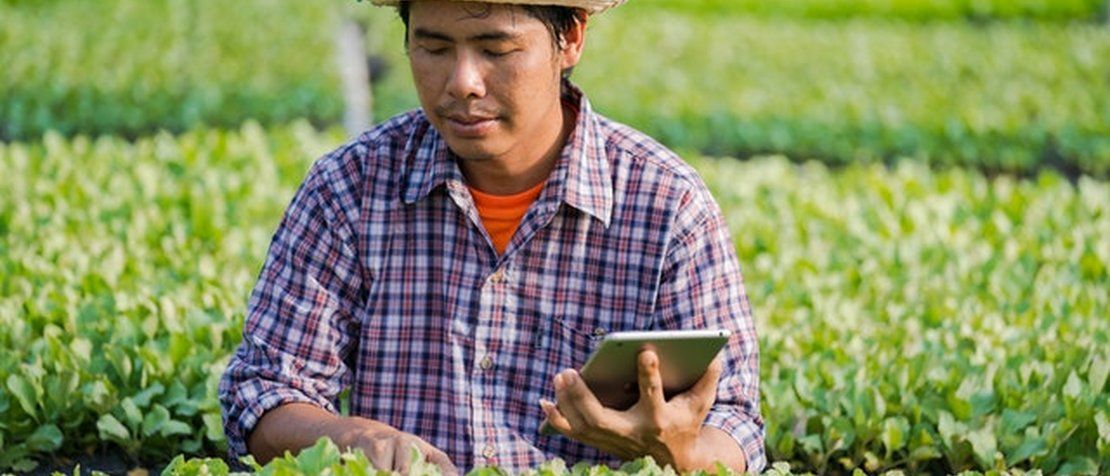
Accelerating digital rural transformation as FAO turns 75
*This article has been adapted from my remarks at the 32nd Session of the Food and Agriculture Organization (FAO) Regional Conference for Europe (ERC).
Much has changed since the creation of the FAO 75 years ago. With the advent of information and communication technologies (ICTs), agriculture has become digital. Today, farmers can monitor their crops, detect pests, better forecast demand for their products, or optimize the use of water. All of this with just a mobile phone! And it is just the beginning. New technologies promise to bring about digital solutions that will push the boundaries of innovation and digitalization further than ever before. A development revolution for all As the UN specialized agency for ICTs, ITU is at the forefront of this digital revolution. We have accompanied farmers in their digital journey early on, focusing mainly on connectivity to help them sell their products and learn technologies. In this new era, ITU wants to help our farmers take full advantage of new technologies like 5G, IoT, and AI, so that they can increase production and better manage processes and food security chains while respecting the environment.
We are committed to turning today’s digital revolution into a development revolution for all, and the role of our farmers is fundamental to that effort.
But how can individual farmers in underserved and remote areas benefit from ICTs? This is a central question ─ especially since in many countries and regions of the world that are home to millions of small-scale producers, even basic ICT services are still out of reach or too expensive. To help answer this question and connect all smallholder farmers, we should turn to what I call the “4 I’s”: Infrastructure, Investment, Innovation, and Inclusiveness. My four I’s Let’s start with infrastructure and investment. A recent report from ITU and FAO found that most countries of Europe and Central Asia covered in the study have not yet implemented a national strategy for the agricultural sector’s use of ICTs. I believe this is an opportunity for all countries to develop a new whole-of-government ICT investment strategy, to avoid fragmenting ICT investments among different Ministries precisely when more investments in ICTs and in ICT infrastructure, in particular, are needed. The “e-Consultation on digital agriculture investments and digital transformation in Sub-Saharan Africa” conducted by ITU and FAO is open until 9 November. African farmers need our support now more than ever before. The third of my four I’s is inclusiveness. Affordability and lack of digital skills remain some of the key barriers to the uptake and effective use of the Internet ─ an issue that particularly affects people in remote rural communities who often rely on subsistence farming to maintain their livelihoods. And this situation is further aggravated by the gap in digital literacy between women and men. Innovation is the fourth and final ‘I,’ one that pushes the boundaries of what is possible.
As Director-General Qu Dongyu said on FAO’s 75th anniversary, innovation is “our ally in re-imagining our food systems and ending hunger.”
ITU is committed to continue working with FAO and other stakeholders to foster and accelerate digital agricultural innovations in all these areas, including projects with national governments to provide connectivity and digital services to rural villages, organization and support of digital skills trainings for women and girls, and work with national telecom operators to lower the cost of network services for vulnerable populations. All of this shows how crucial partnerships are to the future of digital agriculture. A strong and lasting partnership ITU and FAO have built a strong partnership over the years. In 2016, our agencies signed a cooperation agreement to assist countries in developing digital agriculture strategies and deploying innovative digital agriculture solutions. We have published a series of joint publications covering how digital and new frontier technologies such as big data, drones, blockchain, and soon artificial intelligence can support food security and sustainable agriculture. And we have co-organized several Digital Agriculture Solutions Fora for Asia and the Pacific. This year’s virtual event will focus on “Bridging the digital divide and bringing digital agricultural innovations to smallholders and small-scale enterprises.” Time is of the essence. Because of COVID-19, FAO and other UN organizations estimate as many as 132 million more people may suffer from undernourishment. With only 10 years left to achieve the Sustainable Development Goals, we must collaborate to accelerate digital rural transformation and help end hunger in the lead-up to, during, and following the upcoming UN Food Systems Summit 2021.

ITU Secretary-General Houlin Zhao addresses the 32nd Session of the FAO Regional Conference for Europe. Image credit: ITU
Header image credit: Sorapong Chaipanya via Pexels
